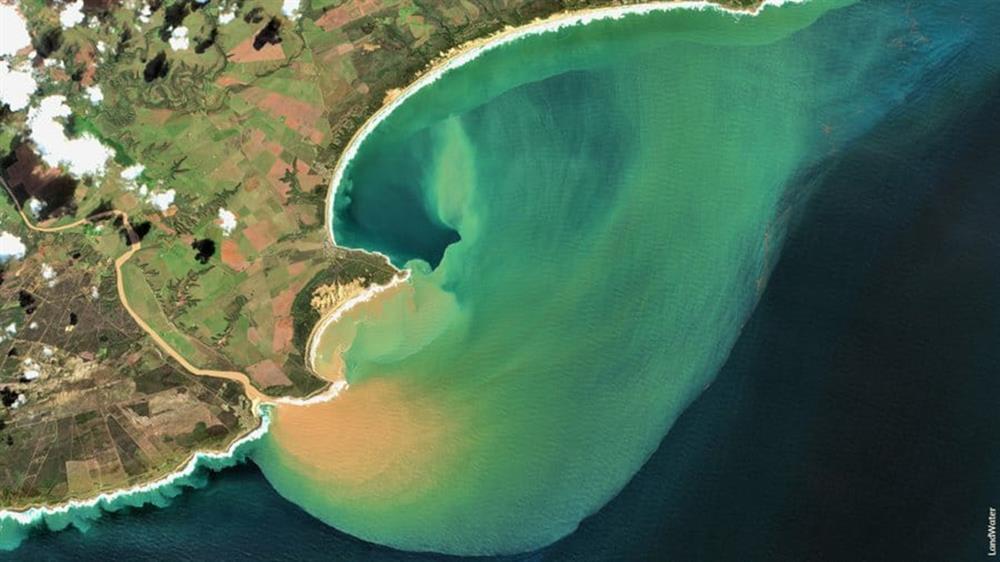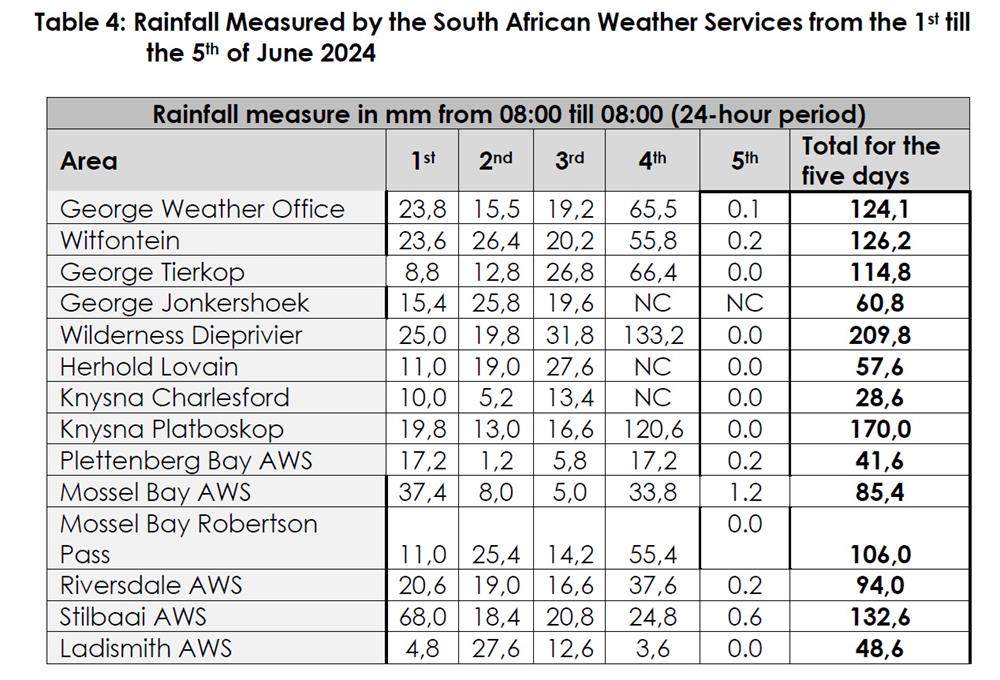GEORGE NEWS - The Garden Route District Disaster Management Centre (DMC) has learned a number of valuable lessons from the disruptive rain and floods that impacted large parts of the region last week.
In a report-back to the Garden Route Council on Friday 7 June, disaster management chief Gerhard Otto said that the South African Weather Services' early-warning systems for disruptive rain in catchment areas of the major dams in the district need to be improved.
This would enable the DMC to be better prepared for similar future scenarios.
Otto said although the rainfall patterns in the Garden Route region were not exceptionally high, several dams overflowed because of rivers flowing into them from neighbouring regions that had exceptionally high rainfall.
It led to the combined overflows on the same day, Wednesday 5 June, from the Stompdrift, Kammanassie, Koos Raubenheimer and Gamkapoort dams into the Olifants River, significantly impacting people in areas close to the river. Access to various roads and passes was also severely impacted. Seventeen people had to be rescued from flooded areas.
Otto referred to the floods in 1996 and said although the water spilling from dams in the catchment matched the 1996 level, they did not peak simultaneously. "This resulted in the river flow moving south in waves rather than as a single, destructive giant wave."
Improving systems
He said early-warning systems should be upgraded through additional rainfall measurement equipment in catchment areas of the major dams and acquiring radar equipment covering the Central Karoo which would enable the DMC to be alerted timeously of flooding in Meiringspoort.
The poort was again flooded without warning, as has happened in the past, and people had to be evacuated from there.
"We also need additional river gauging stations between the Stompdrift Dam and Calitzdorp Spa, preferably around Oudtshoorn, and we need to develop an electronic near-real time road status dashboard that could be updated via a cellphone application, and linked to our web page."
The Western Cape Department of Transport and Public Works was quick to make the N12 between Oudtshoorn and De Rust accessible after the Nels River created a large gap.
It was damaged on 4 June and by Friday 7 June, it was accessible again after the gap was temporarily repaired. Complete rebuilding of the road is yet to follow.
Otto highlighted the importance of timeous communication of early warnings from the South African Weather Services (Saws). A Yellow Level 4 warning for disruptive rain, valid from 01:00 until 23:00 on Tuesday 4 June, was received by the DMC only at 10:47 that same day.
"The GRDM received an early warning for disruptive rain while it was happening. Is this forecasting or now-casting? This oversight was brought to the attention of Saws who offered an apology and indicated that a formal investigation into this oversight would follow.
"The Saws should provide severe weather early warnings applicable to our neighbouring provinces, as well as real time rainfall data to the GRDM DMC. This will allow for proactive planning in terms of dams that would spill," said Otto.
Persistent rain fell from Saturday 1 June in various parts of the Western, Northern and Eastern Cape. The Garden Route DMC joint operations centre was activated on Wednesday 5 June at 01:00.
 The gap over the N12 was temporarily repaired by Friday 7 June.
The gap over the N12 was temporarily repaired by Friday 7 June.
 The confluence of the inland rivers is in the Gouritz River. This image shows the fresh water running into the sea at the Gouritz mouth. Photo: GRDM
The confluence of the inland rivers is in the Gouritz River. This image shows the fresh water running into the sea at the Gouritz mouth. Photo: GRDM


‘We bring you the latest Garden Route, Hessequa, Karoo news’
















